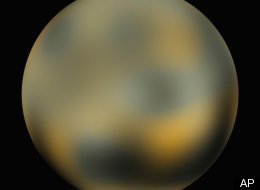A
Astro_Robert
Guest
I think that if we or some other civilization had the technoogy to artificially capture a large object into a circular orbit, then we/they would probably also possess the technology to terraform such an object. But then one would also be making gross assumptions about the composition of this object.
However, I would imagine that placing an object that large would have gravitational implication for the other terrestrial objects. Others can expand on it, but as I understand it the theory of migration implies that current orbits are what they are because when planets formed they were more closely packed and perturbed eachother until they spread out far enough that perturbations eased. If a new object were thrown into the mix it would presumably introduce new perturbations.
An alternative might be to crash all of the main belt asteroids into Mars and then proceed to terraform it, although we can't do that either.
However, I would imagine that placing an object that large would have gravitational implication for the other terrestrial objects. Others can expand on it, but as I understand it the theory of migration implies that current orbits are what they are because when planets formed they were more closely packed and perturbed eachother until they spread out far enough that perturbations eased. If a new object were thrown into the mix it would presumably introduce new perturbations.
An alternative might be to crash all of the main belt asteroids into Mars and then proceed to terraform it, although we can't do that either.



